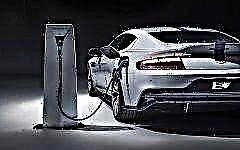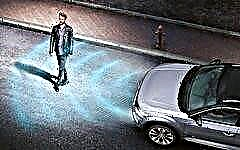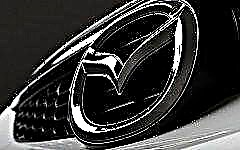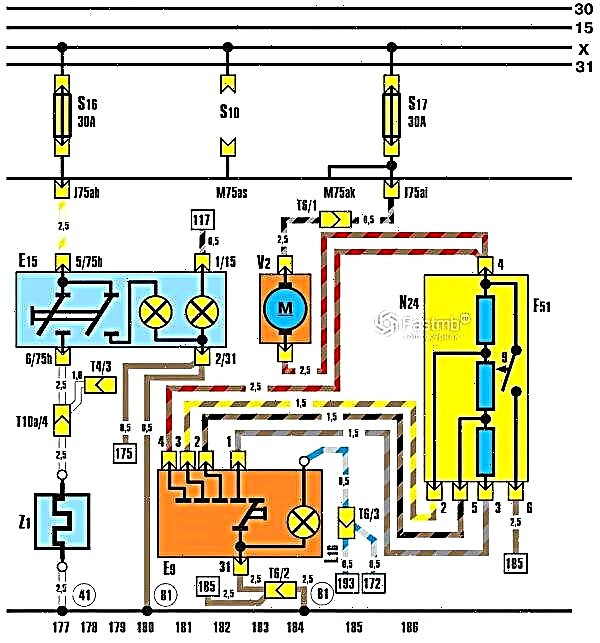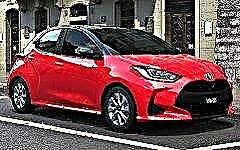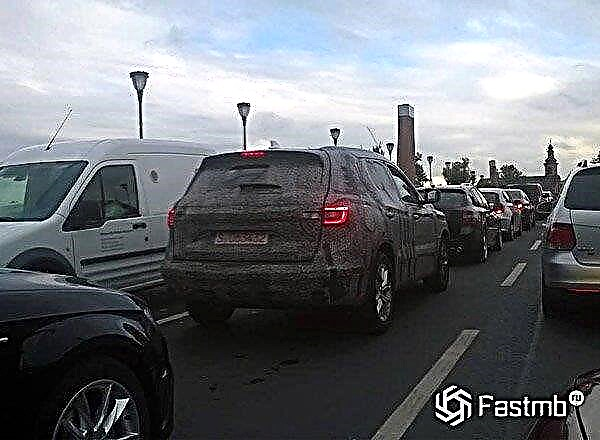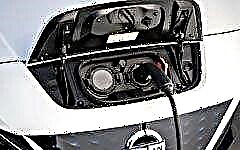

The content of the article:
- What is a thickness gauge
- How the thickness gauge works
- Variety
- Etari ET-111 advantages
- Price and equipment
Etari ET-111 is a new metal paint coating meter, also known as thickness gauge. Typically used to measure the paint finish of a car body. The novelty is able to work with ferrous or non-ferrous metal, showing all the nuances of the car body. Thus, using the Etari ET-111 thickness gauge, you can understand whether individual body parts were painted or not.
Modern technologies for painting a car body allow you to apply a paintwork that is close to factory conditions. Therefore, even experienced specialists are not able to determine the painting of parts from the first time. Also, the new device Etari ET-111 makes it clear how severe the damage to a particular part was and what to expect in the near future. Using the Etari ET-111 thickness gauge, you will save yourself the chance to be deceived when buying a car, as there are cases when a new car from the salon has been repainted.
What is the Etari ET-111 thickness gauge and what is it for?

As it becomes clear from the name itself, the thickness gauge is designed to measure the paintwork of the car body. The first copies could cope with basic tasks, showing the presence of putty. The progress of technology does not stand still, and modern specimens of thickness gauges can tell a lot about the car that will be checked.
Any seller of a used car is trying to bail out as much money as possible for his "swallow". Some sellers can tell the truth about what, when and why was done in the car, but more often there are those who hide the true story, saying that everything is in order. It is very difficult to recognize a broken car without experience, which is why they came up with such a device as a thickness gauge.
The main task of the thickness gauge, in our case Etari ET-111, is to measure the thickness of the paint coating from metal to the top coat of varnish. The car body can be made from both ferrous metal and aluminum or other alloys. Most devices are designed to work with ferrous metal, the Etari ET-111 thickness gauge is capable of recognizing both ferrous and non-ferrous metals.

Often, after a small accident, the car remains on the move, but they try to tint the appearance and bring it back to its original appearance. Car owners hide the true side of the car through putty and painting. As a rule, over time, such a part of the paintwork will crack, rust, or even an unpredictable situation. As a result, the new owner of the car will receive a lot of frustration, the need for a cash investment and a decrease in the chances of selling at the desired price.
It is with the Etari ET-11 thickness gauge that you can find out the thickness of the metal, paintwork and the presence of putty in one place or another of the body. Based on the data obtained (thickness, measured in microns), it can be concluded which paint layer, which metal is on the car body, as well as whether there is putty and metal patches, which in a couple of years will fall off in rags.
Such Etari ET-111 thickness gauge is very popular among outbidders that sell cars. In just a few seconds, you can determine any hidden defects, whether the car was in an accident, the complexity of the accident (light or with a serious restoration of the body), what exactly was repaired. Motorists without experience and special courses will also be able to use the Etari ET-111 device, just read a short instruction and make a couple of test measurements.
How Etari ET-11 Thickness Gauge Works

It was said above that the main purpose of the Etari ET-11 thickness gauge is to measure the thickness of the paint and varnish coating. For most car manufacturers, it is the same and lies in the range of 0.7-1.8 mm or more microns. Do not forget about the error of the Etari ET-111 device itself, even the most expensive factory ones can give an error of + - 2 microns (microns). This is considered normal as the number is often floating.
For more accurate information about the thickness of the paintwork, each manufacturer puts its database on the Internet, where the brand, model, year of manufacture, color with a special code, as well as the thickness of the paintwork are indicated. If the measurements of the Etari ET-111 thickness gauge are within the normal range with a characteristic error (there may not be an error), then we can conclude that the car is safe and sound. Measurements with the Etari ET-111 thickness gauge, as a rule, are done 4-6 times for each car body part.

The principle of operation of the Etari ET-111 thickness gauge is simple, experienced owners advise to calibrate the device before starting the test. For this, the manufacturer, together with the Etari ET-11 thickness gauge, supplies two special plates in the kit, there is an option when there is one plate (on one side it is covered with paint, on the other side it is not).
To start calibrating the Etari ET-11 thickness gauge, remove the protective cap and press the device sensor against the unpainted plate (to the metal base). On the display, the Etari ET-111 device should show the number 0, otherwise, make sure that the plate is perfectly clean, even fingerprints can give an error in measurements. After measuring, remove the device and press the "0" button respectively on the Etari ET-111 panel.
The second step in calibrating the Etari ET-111 is to measure data from a paint-coated plastic plate. Put it on top of the first metal plate and repeat the measurement procedure, the results should show data on the screen, which will be accompanied by a corresponding sound signal. Then, using the "up" and "down" buttons, bring the indicator to the figure 102 µm. To enter calibration data into Etari ET-111 memory, press and hold the "CAL" button for more than 3 seconds.

Before measuring paint thickness with the Etari ET-111, find the body thickness chart for the test vehicle. Thus, it will be much easier to understand where the thickness of the paintwork is factory-installed and where it is not. Measurement of paint thickness with the Etari ET-111 should be done slowly. The surface must be clean and even, as a result, the error will be the smallest. Nominally distribute the body part, which you will measure at 4-5 points to take data. After removing the protective cap of the sensor, lean the Etari ET-111 Thickness Gauge perpendicular to the surface. After a few seconds, the display will show numbers, this is the thickness of the surface, measured in microns (μm). If the Etari ET-111 indicator is within the normal range according to the table with a small error of 2 microns, then the paintwork is native, if the deviations from the norm are large, then not everything is clean under the paint layer.
In the case of the presence of putty, the deviation of the Etari ET-111 indicators from the norm of the range will be two or three times greater, but if there are metal patches, then the values can be the maximum permissible for the thickness gauge. Also, based on the data of Etari ET-111, one can judge how complex the accident was and how thick the layer of putty is under the paint.
A variety of thickness gauges

The modern progress of electronics makes it possible to make thickness gauges of different nature and size, respectively, and the indicators will be of different quality. As mentioned above, the principle of the Etari ET-111 thickness gauge is quite simple, it measures the distance from the contact surface to the base of the metal part. According to the type of thickness gauges, there are:
- magnetic;
- electromagnetic;
- eddy current.
Each of the devices has its own pros and cons, often this is the ratio of features, quality and price. Magnetic thickness gauges are the simplest and most common.Similarly, the principle of operation of this type of device is primitive, a magnet is installed in the body, due to which the degree of attraction to the metal body part is determined. Based on the received data, the result is displayed on the display or dial gauge. But there is also a minus, the device works only on metals capable of magnetism, alas, there are car bodies made of aluminum or galvanized. In this case, it is almost impossible to obtain data with such a thickness gauge.

The second type of thickness gauge is electromagnetic - often the price of such a device is not small. The thickness gauge is based on the principle of electromagnetic induction, due to Hall sensors. The principle of operation is not complicated enough, the body is a kind of closed circuit, the larger the gap (in our case the paintwork), the stronger the signal will be. The indicators of such a device are the most accurate, but the price is often ten times more expensive than conventional devices.
The latter type of eddy current thickness gauge is mainly used in the case when the body or individual parts of the car are made of aluminum. Such a device can work on the surface of any metal, and the measurement results will be no worse than an electromagnetic one. The downside is that with ferrous metals, the error is greater, but with aluminum or copper, they are more accurate, therefore it is recommended to use this thickness gauge for the intended purpose of metals. As for the Etari ET-111, it has significant differences.
In our case, the Etari ET-111 is capable of working with both ferrous and non-ferrous metals, while the error will be minimal within the normal range. This Etari ET-111 thickness gauge is combined and combines the above-pointed options for parting, thereby achieving the most accurate data.
Advantages of the Etari ET-111 thickness gauge

We have given examples of thickness gauges above, but the situation of use may be different, and buying several will be financially unprofitable. A huge advantage of the Etari ET-111 is its uniqueness and the ability to work simultaneously with any type of electrically conductive metal. The response of the Etari ET-111 thickness gauge is fast, while it independently recognizes the type of metal, which makes it universal and does not require separate adjustment manipulations.
| Etari ET-111 Thickness Gauge Specifications | |
| Metals to measure | iron, steel, copper, aluminum, zinc, bronze, brass, etc. |
| Measurement range of ferrous metals, microns | from 0 to 2000 |
| Measurement range of non-ferrous metals, microns | from 0 to 1000 |
| Measurement resolution on display | 1 micron |
| Measurement error, μm | 2 μm (+ - 3%) |
| Response time, seconds | 1 |
| Operating temperature, С | from -25 C to +50 C |
| Humidity level | no more than 75% |
| Storage temperature, С | from -25C to +60 C |
| Temperature coefficient of error | 0.1 in the range less than +18 C or more than +28 C |
| Automatic shutdown, seconds | 60 |
| Power Etari ET-111 | batteries 1.5V (type AAA), 2 pcs. |
| Resource of one set of batteries | up to 17 hours of continuous use |
| Battery indicator | is present |
| Dimensions Etari ET-111 | |
| Length, mm | 120 |
| Width, mm | 40,4 |
| Height, mm | 29,2 |
| Weight, gr | about 100 (including batteries) |
Taking into account the induced characteristics, we can conclude that the Etari ET-111 thickness gauge is small in size, lightweight, with a good margin of technical characteristics. In addition to the usual sensor for measuring the thickness of the paintwork, the Etari ET-111 is equipped with LED illumination and UV illumination for checking banknotes.
Another plus is that Etari ET-111 is Russified and does not require additional settings, all output data is easy to understand and well viewed on a high-quality LCD display. In addition, the price of the Etari ET-111 thickness gauge is not high, given the capabilities and configuration.
Package contents and price of Etari ET-111 thickness gauge

The manufacturer has provided that the Etari ET-111 thickness gauge from time to time will have to be carried and often used, given its versatility, then from time to time to be calibrated. The set of the Etari ET-111 thickness gauge is quite good considering the price.
| Etari ET-111 thickness gauge complete set |
| thickness gauge Etari ET-111 |
| pouch with belt clip |
| rubber shockproof cover for Etari ET-111 |
| warranty card for 18 months |
| instruction manual in Russian |
| calibration washer - 2 pcs. |
| calibration plate - 1 pc. |
| table with the thickness of the paintwork by car model |
| AAA batteries - 2 pcs. |
| original box for Etari ET-111 |
As for the price of paint and varnish thickness gauges, first of all it will be formed from the purpose of the device, or rather from the metal that it is able to determine. An equally important role is played by the error of the device, the smaller it is, the more expensive the device will be. The average cost of an ordinary thickness gauge starts at 15,000 rubles.
The new Etari ET-111 thickness gauge in various stores of automotive accessories and spare parts starts at a price of 12,000 rubles, but it should be understood that this is an overpriced. The distributor at the link below offers to buy Etari ET-111 with a 50% discount. The price without a discount is 9990 rubles, but with a discount Etari ET-111 will cost 4990 rubles. In addition, the manufacturer offers an 18 month warranty and no prepayment for the product. Payment for the purchase is made after receiving the Etari ET-111 thickness gauge and inspecting it, as well as certificates of conformity for the device.
Buying an Etari ET-111 thickness gauge from a distributor, you will receive quality goods from the warehouse. After completing the application, the manager will contact to clarify the delivery address and order data. Delivery of Etari ET-111 on average takes 5-10 days and depends on the region of delivery, in some cases the time may be an order of magnitude shorter.


